In the breadth of a single stanza, Longfellow evokes the image of two icons that have all but disappeared from our shared American experience: the village blacksmith and the American chestnut. Mount Saint Mary’s (MSM) is doing its bit to revive one of those icons by offering credited courses in blacksmithing.
MSM is in its second year of offering the course. There were six students the first year for just one class. This year, there are fifteen students in three classes. Each of the three classes meets once a week in the evening for four hours. One of the classes is an advanced class for the students who wanted to continue learning from the previous year.
As a testament to the class’s appeal, there is a waiting list forty-six students deep—and counting—for next year’s course.
The course is taught by Harold Green of Emmitsburg at his shop on Waynesboro Road. He prefers to be addressed simply as Harold. Initially reluctant to teach, Harold has been wowed by his students. He constantly comments on how enthusiastic his students are and what a pleasure it is to teach a skill to such eagerness.
When asked why they would take a course in such an old technology, senior math/computer science major Thomas Passaro simply expressed a desire to create something with his hands. That seemed to be the consensus of the others—a desire to create something tangible.
Annie Brennan, a neuroscience major from Northern Virginia, was one of the charter students of the first year. She’s in the advanced class this semester and helps Harold teach the class, all while learning the trade. She’s done well enough to have some of her work picked up to be sold in the Ximenez-Fatio House Museum’s gift shop in St. Augustine, Florida.
In watching Harold conduct his class, it’s easy to see the truth in his statement that his students have become friends. There is a continual, good-natured banter between student and teacher not often found in a typical classroom. His wife, Diane, often feeds the students.
After seventeen years, Harold retired from Camp David in 2016. He’s been a blacksmith for more than forty years. In a year’s time, he exhibits his skills and wares at as many as twenty-seven vendor shows, including Colorfest.
Harold’s shop, Horseshoe Forge & Ironworks, is located at 9245 Waynesboro Road, just west of Emmitsburg. Besides the items from the forge found in the gift shop, Harold is a farrier and does custom ironwork as well.
If you want to find him at Colorfest, you can find him up front in the town park near the tennis courts. Just listen for the ring of the anvil.
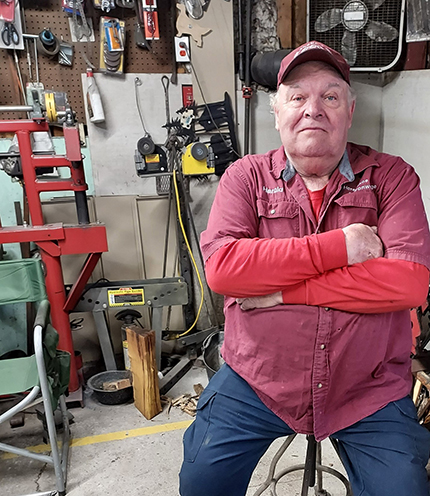
MSM blacksmithing instructor, Harold Green, in his Emmitsburg shop.
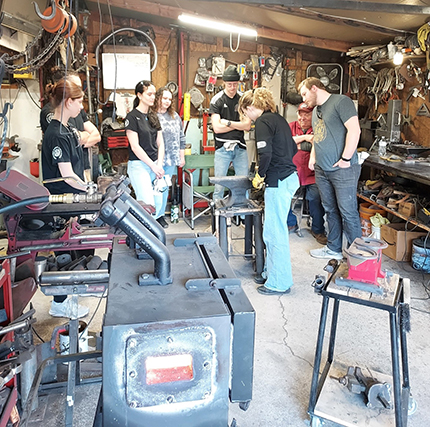
Annie Brennan demonstrates for the class.
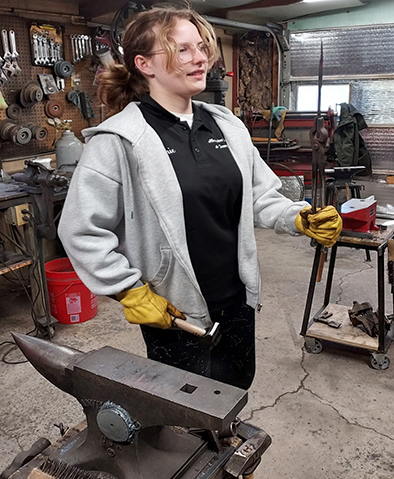
Annie Brennan demonstrates for the class what the taper for a wall hook should look like.
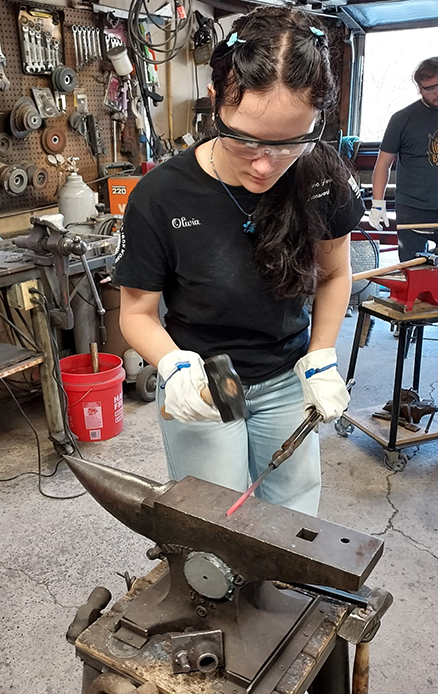
Olivia Irvin, a Health Sciences junior from Calvert County, Maryland, starts forming a piece of bar stock that will become a wall hook.
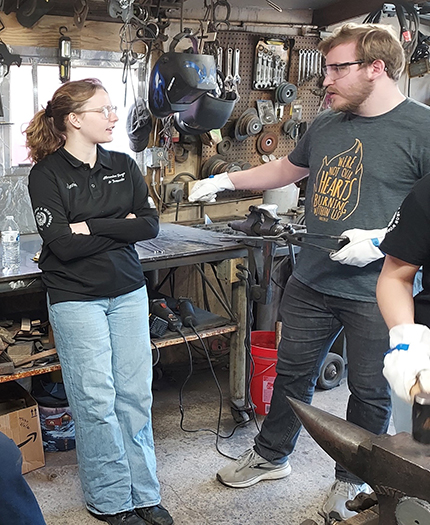
Thomas Passaro discusses with Annie Brennan his progress with the wall hook project.

